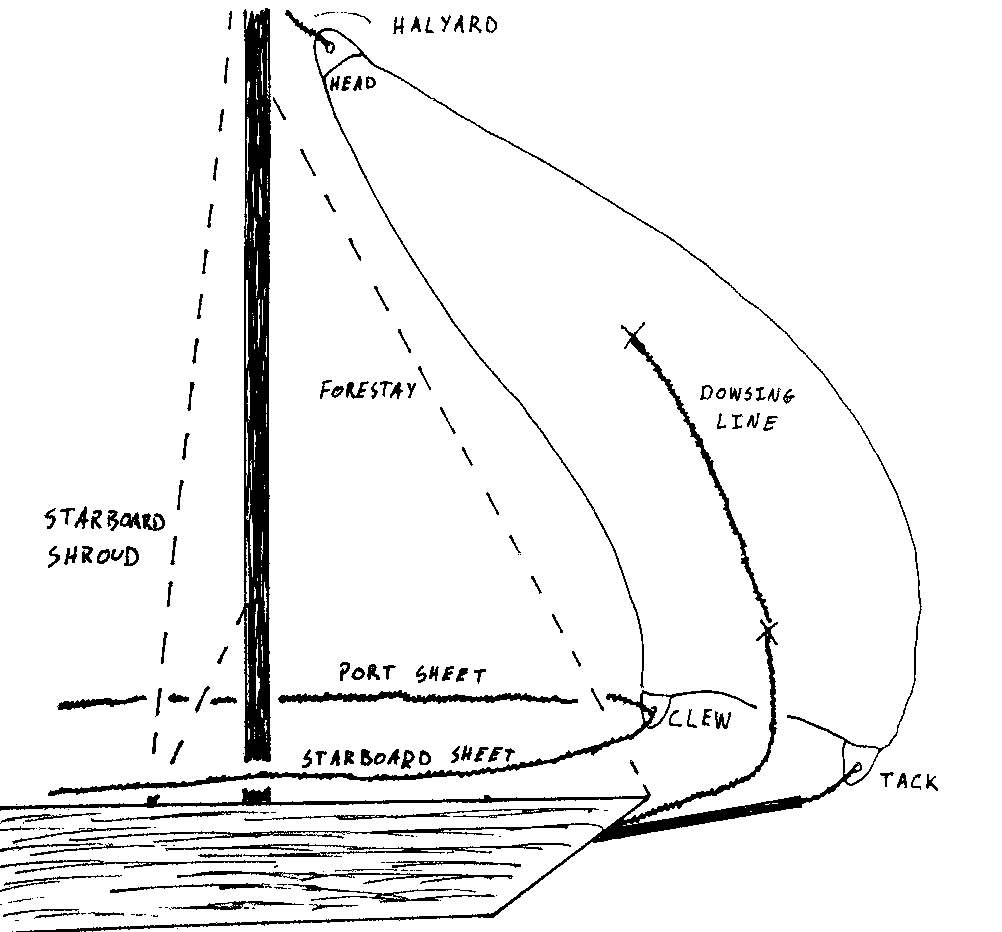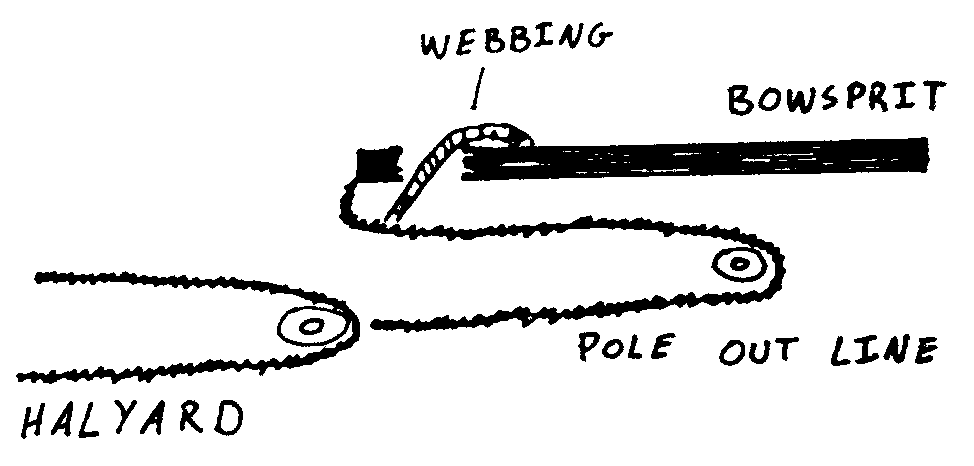One of the common pitfalls of sailing a dinghy downwind is that in a sudden gust, the boat will start to head up, leading to a capsize. In this blog post, I'd like to share some of my thoughts on the factors in play and how to best deal with them. This discussion applies to sailing with just main and jib, as well as to those thrill-seekers using a gennaker.
To begin with, why does your dinghy insist on heading up in a gust? There are (at least) two factors involved. To begin with, your dinghy typically has a bit of weather helm: to get technical, the center of effort (COE) on your sails lies slightly behind the center of lateral resistance (CLR) created by your dinghy's foils. In normal conditions, a bit of weather helm makes for a nice responsive tiller that helps you to better "feel" the boat and the wind. However, as the force on the sails increases as happens during a gust, the discrepancy between the COE and CLR is amplified, causing more and more weather helm. This effect will cause your boat to want to head up more strongly during a gust.
However, the natural weather helm caused by the discrepancy between COE and CLR isn't typically what will cause you problems. Instead, it is the additional weather helm caused by excessive heeling. Indeed, as the boat heels more, the hull's interaction with the water creates extra weather helm. Furthermore, your rudder is now only partially submerged, giving you less control over rounding up. And that is just the beginning: assuming that you are sailing below a beam reach, the more the boat rounds up, the more the heeling force on the sails increase. This causes more rounding up, which causes more heeling which causes... you can see that this will probably end with you getting wet.
Now that we know two of the main factors in play, let's consider three different scenarios.
- First scenario: you're sailing on a dead run when a gust hits. The force of the wind on the main will indeed cause the boat to want to round up a bit. However, since you're on a run, it won't cause much heeling, so you only have the first aforementioned factor to deal with.
- Second scenario: you're on a broad reach when a gust hits. Now you're in trouble -- you have both excessive weather helm coming from the force on the main, as well as weather helm caused by heeling. As you round up towards a beam reach, you can't depower the main, and you may end up capsizing.
- Third scenario: you're on a beam reach when the gust hits. Again, both factors will apply, but as the boat rounds up above a beam, the main will start to depower, reducing heeling and weather helm and saving your bacon.
From the above analysis, we see that the danger of rounding up and capsizing is greatest when sailing close to a broad reach. But never fear: we have some powerful weapons at hand in combating the evil demon of weather helm.
First, we would like to be able to depower the main sail while sailing on a broad reach; this will decrease both natural weather helm and excessive heeling. Our first weapon for doing this is the vang or gnav. Easing this control in a gust lets the top portion of the sail twist away from the wind. While crewing for one of our club's most experienced dinghy sailors during the infamous Fast Track squall of May '12, my skipper had me blowing the gnav in every gust, and this is what let us limp back to the club in (more or less) once piece.
Our second weapon in depowering the main is of course the main sheet. If the wind is howling 20 knots and your Bahia is screaming along on a broad reach, chances are that your high boat speed is shifting the apparent wind far enough forwards that your main sheet should not be all the way out. The added bonus is that when the gust comes, you can now ease the sheet to help balance the boat and depower the main. If you instead neglected to sheet your mainsail in at all, you can't depower by easing the main!
Apart from depowering the main sail, the above analysis tells us that we want to do everything possible to keep the boat flat. Anticipating the gusts and aggressively falling off is key. Likewise, hard, aggressive hiking (or even sending crew out on the wire) are also important. Keep in mind, though, that if you are already hiking out hard before the gust hits, you won't be able to up the ante when you need to. Just as with the main sheet, it is highly advantageous to have a bit of room to make adjustment during gusts. Finally, aggressively sheeting in the jib (or gennaker) in gusts so that it stalls a bit will shift the COE forward in the boat, which will also decrease weather helm. Likewise, raking the centerboard aft slightly will shift CLR aft, also decreasing weather helm.





